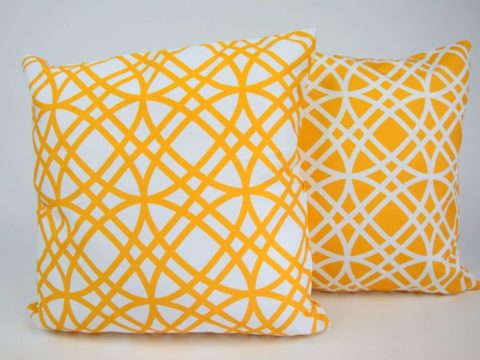Elizabeth of York: Life Story
Chapter 2 : Dauphine of France
There are no detailed records of Elizabeth’s education, but she could read and write in English and French, keep household accounts and, of course, had all the usual courtly skills of musicianship, dancing, hunting, hawking and riding. Both her parents were interested in the new technology of printing, and it is likely that she read the tales of romance and chivalry that were amongst Caxton’s first productions.
Elizabeth’s expenses were paid from the grants given to her mother for the maintenance of her and her sisters, who were born in the late 1460s. When not at Westminster, she lived largely at Sheen under the care of Margery, Lady Berners, wife of one of Elizabeth’s distant cousins. Eltham was another favourite home, extensively remodelled by Edward.
Elizabeth’s first betrothal to George Neville came to nothing. Montague, his loyalties torn, elected to support his brother, Warwick, and, like his brother, was killed at Barnet. Her father was probably relieved at being able to break off the betrothal, as, now he had a son (Prince Edward, born whilst Queen Elizabeth was in sanctuary) he could use his daughter to promote a suitable foreign alliance.
One of Elizabeth’s earliest public appearances was at Windsor Castle, at the reception there of the Lord of Gruthuyse. Gruthuyse had supported Edward in exile, and persuaded Charles, Duke of Burgundy (Edward’s brother-in-law, but previously inclined to the Lancastrian cause) to give Edward sanctuary and support, and enable him to return to England and oust Henry VI once again. As part of the entertainment there was the usual dancing and Elizabeth danced with her father.
The following day, another banquet was held at which Elizabeth was seated with her parents and the highest ranking guests, before dancing with the young Duke of Buckingham, married to her aunt Katherine, and, like Elizabeth, descended from Edward III.
Once secure on his throne, and with the Lancastrian threat apparently gone (other than the minor princeling, Henry Tudor, Earl of Richmond, who was living under the protection of the Duke of Brittany), Edward began to turn his eyes to France.
One of the underlying causes of the Wars of the Roses, was Henry VI’s lack of warlike prowess, and the inability of the Lancastrians to hold the lands they had gained in France under Henry V. Elizabeth’s grandfather, Richard, Duke of York, had been one of the more successful commanders, and Edward IV, with his military skill, hoped to reverse the tide of loss that had reduced England’s territory on the continent to Calais and its environs.
What Edward did not immediately take into account, was that in the years since England’s last victories, France had become a more united, centralised, wealthy and powerful state. He raised a substantial army in mid-1475 and crossed the Channel, to find that Charles of Burgundy was not as robust an ally as he had hoped, and that Louis XI, the arch-enemy of the Burgundians, was willing to come to an accommodation with the English.
At the Treaty of Picquiny, it was agreed, amongst other points, including fat pensions for Edward and many of his nobles, that Elizabeth would marry the Dauphin Charles, Louis’ four year old son. From this time, Elizabeth was known at the English court as Madame la Dauphine.
Although logically, it was an excellent outcome for Edward – saving money and lives, it did not accord with the ideals of honour prevalent at the time, and he was widely criticised for the treaty - not least by his youngest brother, Richard, Duke of Gloucester.
It was as Madame la Dauphine that ten year old Elizabeth attended the great public ceremony at Fotheringhay in July 1476. Edward had ordered a magnificent spectacle for the reinterring of the bones of Elizabeth’s grand-father, Richard, Duke of York, and uncle, Edmund, Earl of Rutland, killed at the Battle of Wakefield in 1460.
A year later, Elizabeth, her mother, and her father’s sister, another Elizabeth, Duchess of Suffolk, were installed as Ladies of the Garter. Dressed in a gown of murrey (mulberry-coloured) she heard mass in St George’s Chapel, Windsor, recently refurbished by her father. The ceremony was followed by the Garter feast, in the Great Hall of the castle.
The next great state occasion was the marriage of Elizabeth’s second brother, Richard, to Anne Mowbray in January 1478. The bride was just five, and the groom nine months younger, but Edward was eager for the match because Anne was Countess of Norfolk in her own right, and heir to the vast estates granted by Edward I to his son by his second wife. To keep these out of the hands of any rivals for power, and provide a great landed estate for Richard without diminishing his oldest son’s wealth, was Edward’s objective.
Richard was created Duke of Norfolk and granted a life interest in his wife’s estates, even though they had not reached the canonical age for a binding marriage. Anne died in 1481, and, instead of her lands reverting to her heirs-at-law, subject to Richard’s life interest, an Act of Parliament vested them in Richard and his heirs. Effectively, this was an unlawful confiscation from the true heir, John Howard, and may well have been a contributing factor in the events of 1483, discussed below.
For Elizabeth, although she just about to turn twelve and become marriageable and was probably keenly aware, as all mediaeval people were of the ins-and-outs of marriage and inheritance, the most interesting element of her brother’s marriage was probably the jousting that followed. She helped her small sister-in-law in her role of lady presiding over the tournament and awarding the prizes by handing them to the little girl at the right moment.
Elizabeth of York
Family Tree


